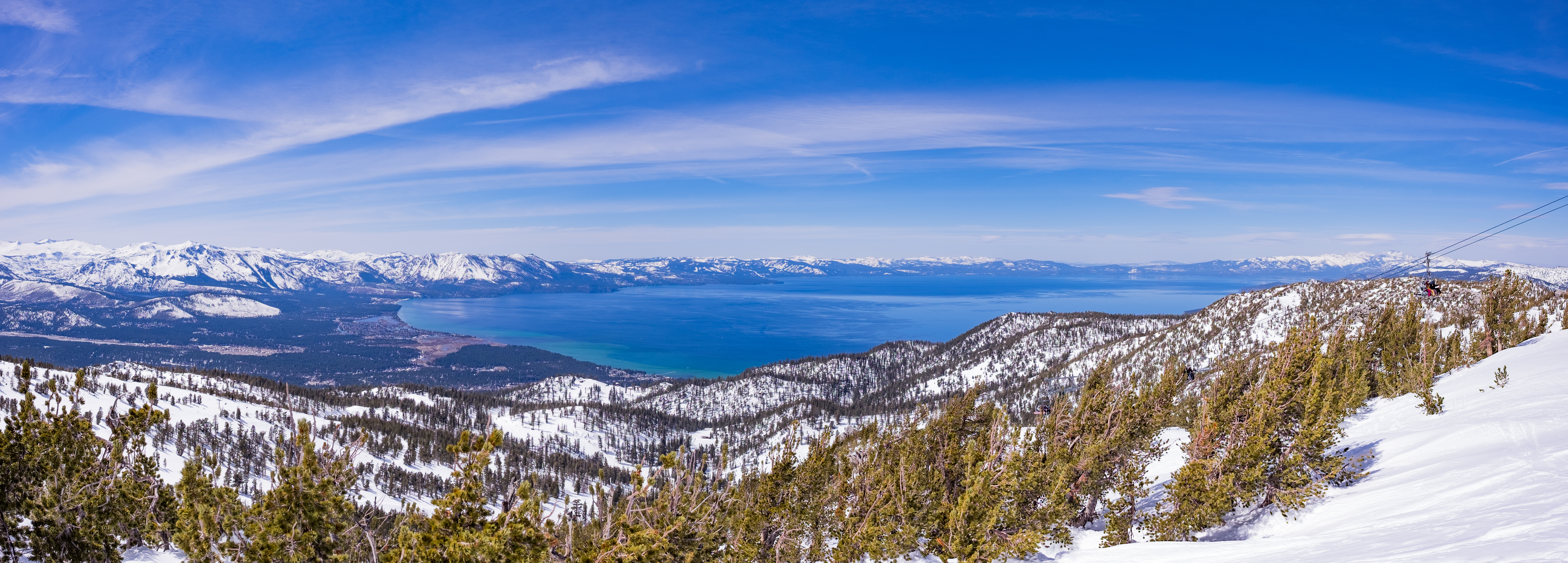Our Elevation
Located 1hr from South Lake Tahoe, our vineyards are in a mountain setting at elevations high above the valley and coastal fog belt, ranging from 2,400f-2,700ft. Elevation is one of the defining features of our Estate.
As air hits the Sierra Nevada Mountains it is forced to rise through orographic uplift. As the air rises, the adiabatic process causes cooling at a rate of around 4 degrees Fahrenheit per 1000ft of elevation gain. As a result, ambient air temperatures at Lava Cap are between 10-15 degrees cooler than the Central Valley below. During the growing season, the elevation and the resulting cool air, play a key role in limiting elevated temperatures during extreme heat spikes. For example, on September 1st of 2017, when St. Helena reached a daytime maximum temperature of 110 degrees Fahrenheit, the daytime maximum temperature in El Dorado at an elevation of 2,700ft was 103 degrees Fahrenheit. The elevation also means ambient air temperatures remain cooler later into the spring compared to other locations in California, leading to 2-4 week delays in budbreak. Later budbreak mean harvest is pushed later into the fall compared to other regions, allowing much of the regions ripening to take place during the cooler months of September and October, rather than the mid-season heat. This pattern of ripening produces grapes that reach phenolic maturity without excessive sugar, losing too much acidity, or sacrificing freshness and vibrancy in the wine.
Our vineyard is further distinguished from other regions by the intensity and quantity of sunlight during the growing season. The Pacific breeze that carries fog across Coastal wine regions does not generally reach us. As a result, Lava Cap experiences a greater number of hours of sunshine during the growing season. Sunlight is critical in the development of proanthocyanidins, anthocyanins and flavonols in berries. Additional hours of sunlight, particularly during cooler morning period when the risk of sunburn and dehydration are lower, lead to greater color concentration phenolic compounds in our wines.
Higher elevation also leads to higher UV radiation and sunlight intensity. UV radiation generally increases by 3%-4% every 1000ft, which means that at 3,000ft UV radiation is around 10% greater compared to sea level. UV radiation represents an environmental signal, modulating the accumulation of secondary metabolites in the skin of ripening berries. As a result, increased UV radiation leads to the greater biosynthesis and accumulation of anthocyanins, flavonols, and other phenolic compounds compared to lower elevation locations. Increased exposure to UV radiation also leads to lower berry size, and a higher ratio of skin to juice in red wine. This combination of hours and intensity of sunshine leads to ripening conditions unique to El Dorado, and are critical in shaping the character of Lava Cap's wine.



